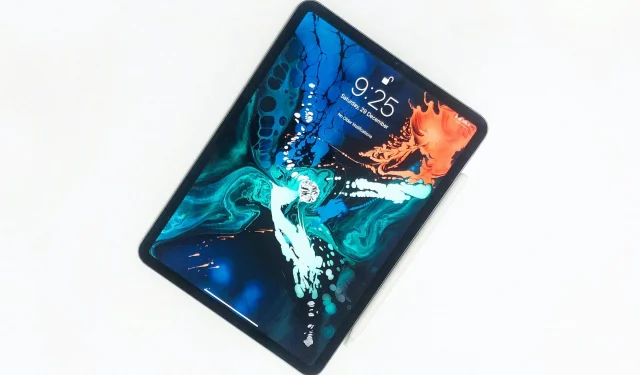Future iPads may use hybrid OLED screens that won’t show wrinkles

Future iPads may use hybrid OLED displays because the flexible ones used in the Apple Watch and iPhone tend to wrinkle when used on screens larger than ten inches.
- What is happening? A new industry report claims that Apple is considering hybrid OLED panels for its upcoming OLED-based iPads because the technology doesn’t suffer from visible wrinkles when used with screens larger than ten inches.
- Why care? OLED technology outperforms current iPad LCDs in terms of true blacks and vivid colors, as well as support for higher resolutions.
- What to do? Tell us what you think of this report in the comments!
Apple may use hybrid OLED panels for future iPads
The typical OLED panel you’ll find on a smartphone is flexible rather than rigid, using polyimide film instead of glass. Apple’s iPhone and Apple Watch use a flexible OLED screen, which in the case of the iPhone is larger than the visible screen because it curves inside the case. Read: New to iPad? Here’s how to set up the dock
But it looks like Apple is concerned that this type of OLED film isn’t suitable for the iPad because it’s prone to visible warping when the screen is larger than ten inches. Warp distortion also occurs on the iPhone’s OLED display, but the effect is subtle considering a typical phone display is five to seven inches.
An industry representative told Korea’s The Elec that “Apple hated the fact that part of a product’s screen could look wrinkled to the user’s eyes when using flexible OLED.”Therefore, the Cupertino giant is now expected to use more expensive hybrid OLED technology to avoid visible warpage.
The technology is said to combine glass substrate (such as rigid OLED panels) and flexible OLED panel technologies. The publication explains that the visible packaging is a side effect of the production of flexible OLED panels.
OLED iPad should have superior display quality
Apple puts a lot of emphasis on display quality. Nobody wants an iPad OLED screen with a screen that crinkles and warps when you press it with your finger. With that in mind, we think Apple is right to take the time to ensure that the first OLED iPad is worth it.
Apple has previously partnered with Samsung Display on OLED panels for the iPad. But after the companies spent over a year on the project, it was abruptly canceled due to high production costs and quality issues.
Display Supply Chain Consultants analyst Ross Young believes the first OLED iPads and MacBooks could arrive in 2024. There are also rumors that Apple is developing a foldable iPhone/iPad hybrid with a fully unfolded nine-inch OLED screen, but such a device is unlikely to launch before 2025.
Leave a Reply